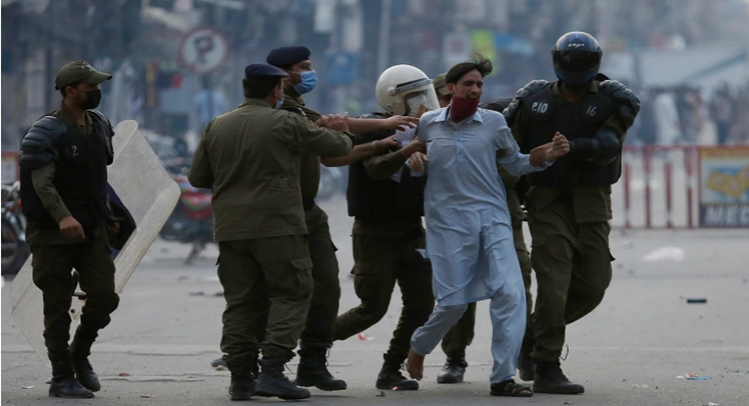It was the wee hours of Tuesday that news of the government and TLP agreement started to pour in suggesting that the PTI govt’s team has reached an agreement, after extensive talks, with the TLP leadership.
The main points of the demand agreed upon between the two sides include: the TLP would end sit-ins; its workers and leader Saad Hussain Rizvi would be released; the govt would table a resolution, the expulsion of French Ambassador in the Parliament; and TLP ban will be withdrawn.
Read more: Talks underway with banned TLP: Will government sign a new agreement?
For many, it was a surrender to extremism and radicalization, while others called it militarised militancy-a Pakistani version of RSS of India.
However, in the post-reaction deal, it is obvious that a fault line was already made after overreaction by the government: use of excessive force and also a disproportionate response in handling the initial protest phase of the TLP led to the belief that the state is overreacting whereas the force in domestic issues has to be used as a last resort when all options of a peaceful resolution are exhausted.
Read more: Govt. cannot be blackmailed by force: Fawad Hussain warns protestors
For many, this religious faultline was simple to seal: ban the outfit and use force if the followers overreact to Govt measures. But simplistic analysis forgets the very nature of Pakistani society and the relation of state in dealing with many diverse groups including the hardliners.
Maintaining the balance
Pakistani society is comprised of all segments broadly categorized as rightwing, left-wing, and middle of the road. State power and leverage should not wear their lense to attempt stamping out the other group.
As a cacophony of all ideas, Pakistan has never been the ideological ground zero of one particular group like Iraq, Syria, and Iran so it has avoided civil strife.
Read more: Is Pakistan heading towards a civil war?
This balance has to be kept in view even if partial or total misjudgments are made due to political compulsions by a setting govt.
State resources should be used only to restore societal balance, check counter-terrorism, and open mutiny. It also implies that the option of use of force as a monopolizing factor has to be on the table.
Read more: FactCheck: Did PTI’s Ali Muhammad Khan threaten to quit party if TLP not unbanned?
But the recent example of force involving the police to curb violent mobs of the TLP was way beyond being proportionate. Social media videos show police firing straight on the protesters.
https://twitter.com/PakNews2021/status/1383791143524044809?s=20
All aspects of the use of force: its justification, its lethality, and which arm of the state has to be employed, were not thought through in the case of dealing with the TLP mobs. So all sorts of lessons need to be learned both at strategic and tactical levels.
Anyway, an impression that the state is with leftwingers against the rightwing forces, will foster a new wave of radicalization and violent tendencies. Be warned.
The writer is a geopolitical analyst, a politician from Balochistan, and ex-adviser to the Balochistan Government on media and strategic communication. He remained associated with BBC World Service. He is also Chairman of the Centre for Geo-Politics & Balochistan. The views expressed in the article are the writer’s own and do not necessarily reflect the editorial policy of Global Village Space.














